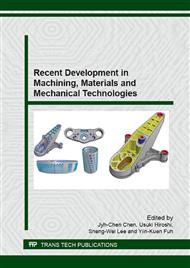p.461
p.468
p.473
p.479
p.484
p.490
p.496
p.500
p.509
Simulation of Cracking Behavior in Planar Solid Oxide Fuel Cell during Thermal Cycling
Abstract:
Cracking behavior of positive electrode-electrolyte-negative electrode (PEN) assembly in a planar solid oxide fuel cells (pSOFC) during thermal cycling are investigated by using a commercial finite element analysis (FEA). The stress intensity factor for various combinations of surface crack size of 1 μm, 10 μm, and 100 μm and shape of semi-circular and semi-elliptical at highly stressed regions in the PEN are repeatedly calculated at room temperature and steady stage for twenty cycles. Simulation results indicate the stress intensity factor is significantly decreased at room temperature and is slightly increased at steady stage with increasing number of cycle. However, all the calculated stress intensity factors during thermal cycling in the present investigation are less than the corresponding fracture toughness given in the literature.
Info:
Periodical:
Pages:
484-489
Citation:
Online since:
July 2015
Authors:
Price:
Сopyright:
© 2015 Trans Tech Publications Ltd. All Rights Reserved
Share:
Citation:


